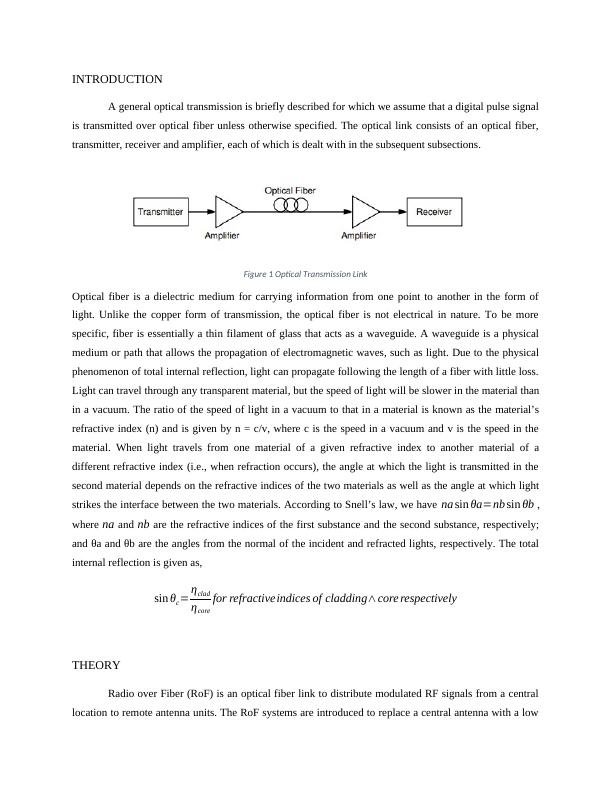Advanced Optical Communication: Theory and Techniques
18 Pages4234 Words395 Views
Added on 2023-06-12
About This Document
This document provides an overview of advanced optical communication theory and techniques, including Radio over Fiber (RoF) technique, Erbium Doped Fiber Amplifier (EDFA), PAM technique, and more. The methodology used in designing RoF system consists of familiarization with MATLAB R2017a software, designing system, generate component and simulation object, running the simulation and analyze the data. Learn about the outstanding features of the radio over fiber technique, such as centralizing signal processing, performance, and error monitoring, share resources, and control and management. Get insights into the design, testing, and optimization of virtually any type of optical link in the physical layer of a broad spectrum of optical networks, from analog video broadcasting systems to intercontinental backbones.
Advanced Optical Communication: Theory and Techniques
Added on 2023-06-12
ShareRelated Documents
End of preview
Want to access all the pages? Upload your documents or become a member.
Experiment on fibre optic transmission PDF
|9
|1330
|31




